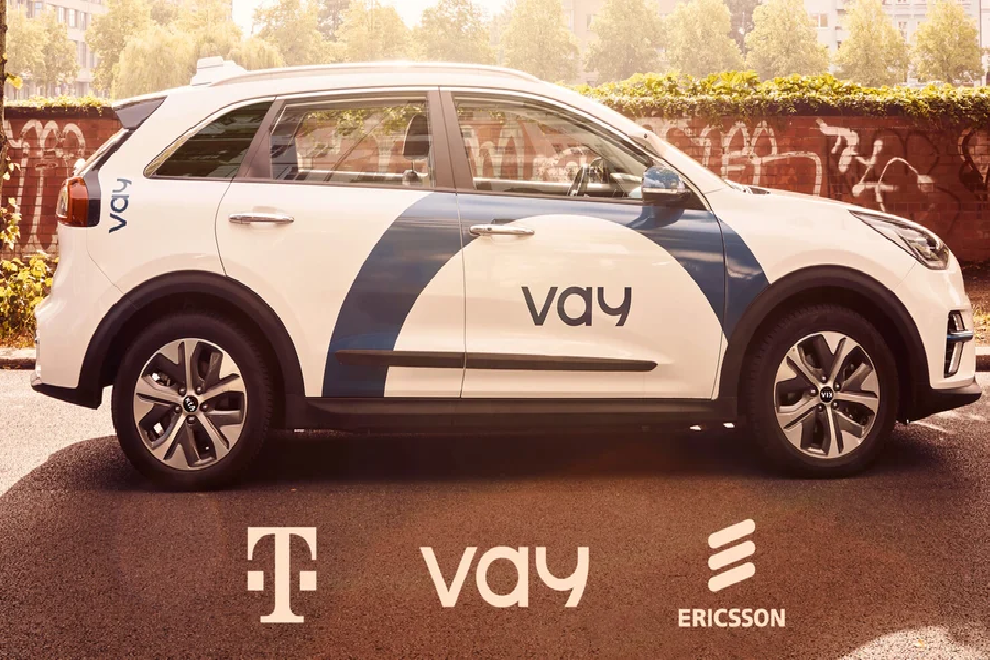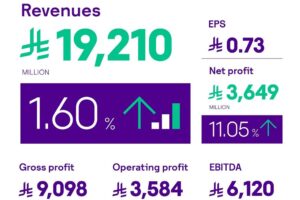Imagine a transport service where an unoccupied electric vehicle turns up outside your home exactly when you need it, you drive it to your destination, you get out and go about your business. No parking. Just a convenient and affordable door-to-door service. That’s exactly the concept behind a remote driving – called teledriving – demo that Ericsson, Deutsche Telekom (DT), and teledriving company Vay will highlight at MWC 2023 in Barcelona.
Before and after a customer takes control of the vehicle, it is driven remotely by a professionally trained teledriver from a teledrive center. Vay operates with redundant mobile networks. If the connection over one network is not sufficient, the signal can still be received via another one.
The demonstration, which will connect live to an electric car in Berlin, is a significant use case proof point for L4S (Low Latency Low Loss Scalable), key technology for high-quality, latency-critical applications. It enables consistent low latency in challenging radio conditions such as network congestion. L4S is part of Ericsson’s Time-Critical Communication capabilities.
The teledriving use case is the latest milestone in the long-standing innovation partnership between Ericsson and Deutsche Telekom to advance the adoption of L4S.
The companies have partnered with Vay for this teledriving demo since October 2022 by implementing and testing L4S. Vay is the first company in Europe to drive a car without a person inside the vehicle on a public road, and aims to launch a sustainable, affordable, door-to-door mobility service with remotely driven (teledriven) cars starting in Germany and the US.
The demonstration will be held in Ericsson’s Hall 2 at Fira Gran Via during MWC 2023 Barcelona, 27 February-2 March. It will show a teledriver remotely operating a vehicle in Berlin from the teledrive station in Barcelona – optimized with 5G managed latency using L4S. The operated car in Berlin will be shown in a livestream onsite.
Thomas von der Ohe, co-founder and CEO of Vay, says: “L4S can bring fundamental improvements to Vay’s teledrive technology. This feature makes it possible to detect network congestion in advance, stabilize latency and avoid packet loss. The main advantage of L4S is the improvement in utilizing network capacity and therefore keeping quality of data transmission permanently at its best possible level – while decreasing the level of network redundancy. Additionally, by reducing the amount of networks needed per car, we can lower costs while increasing our service area coverage, also in more rural areas. This brings Vay one step closer towards its goal of a sustainable door-to-door mobility service at large scale.”
Kaniz Mahdi, SVP Technology Architecture & Innovation, Deutsche Telekom, says: “Deutsche Telekom continues to drive innovation with partners to evolve our 5G network and unlock its power for human-centric applications. Demonstrating the quality of experience benefits of L4S for Vay’s teledriving technology brings us closer to the era of driverless mobility services at scale. L4S, network slicing, and other advanced features in the 5G toolbox will play a crucial role in enabling new and innovative services for consumers and businesses.”
David Hammarwall, Head of Product Area Networks, Ericsson, says: “Just a few years ago the capabilities highlighted in this teledriving demo with DT and Vay would have been beyond imagination. This innovative use case truly shows the capability of 5G connectivity to remotely operate a vehicle in real time, safely and securely. We are continually pushing the envelope on L4S technology, to show the role of Ericsson’s Time-Critical Communication capabilities in changing how we work, live, and socialize.”
He adds: “Such capabilities will dramatically elevate the quality of experience for existing use cases such as cloud gaming, Automated Guided Vehicles, and drones. It will also enable emerging applications such as augmented reality/virtual reality (AR/VR) that service providers can offer to consumers and enterprises.”












